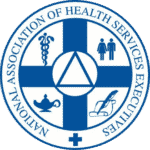What is the current state of our nation’s primary care doctors? These precious resources serve as the center of a healthcare paradigm that is increasingly specialized and dispersed. In the community healthcare universe, this reliance on family practitioners is even more pronounced. So, how are our primary care docs really doing these days? What can your organization do to support them?
Challenges Facing PCPs
Some of the challenges faced by all primary care doctors, and not just those in community healthcare organizations include:
- Caring for patients with multiple chronic diseases. One-half of the U.S. population has one or more chronic diseases. This will increase the complexities and stressors of care delivery for primary care providers.
- The volume pressures of an aging baby boomer population. This comes at a time when the U.S. is already predicting a looming doctor shortage. Rising volumes will pressure primary care providers to increase their workload.
- Increasing patients experiencing mental illness; 84% of primary care doctors say they are unprepared to handle the one in 25 adults experiencing these conditions.
Primary care providers face increasing pressures. What is this doing to their mental health?
Mental Health and Your Family Practice Doc
Family practice doctors have always provided mental health treatment for patients. But the COVID pandemic changed the mental health landscape for all physicians, not just family practice. There was a big uptick in patient volumes during COVID not only suffering from the coronavirus but also struggling with anxiety and depression. What did this do to our primary care doctors?
The data says they’re burning out.
Fierce Healthcare reports, “Primary care doctors experience more burnout and anxiety than other healthcare professionals.” The research says they are burning out at twice the rate of any other medical specialty. Emotional exhaustion brought on from the demands of the pandemic only exacerbated a problem that existed even before COVID. The World Health Organization classified burnout as an occupational hazard in 2019. Many Americans don’t realize that physicians have had higher rates of death by suicide well before the pandemic. In 2019, more than 47,500 physicians took their lives. It’s ironic that the very doctors tasked with treating mental illness are often affected by the stigma associated with brain disease. They, like their patients, often don’t seek help until it’s too late.
The questions for healthcare organizations that employ these doctors is simple.
What will you do to support your family practice physician’s mental health?
What Can You Do to Support Primary Care Physicians?
The American Medical Association (AMA) makes these recommendations to support primary care physicians struggling with burnout:
- Create positive work environments that are safe, meaningful, and supportive.
- Reduce administrative burdens and bureaucratic red tape.
- Offer increased options for learning and expanding skills to keep doctors engaged.
- Give them a seat at the table for organizational decision-making.
- Create an environment that openly discusses and seeks solutions for mental health.
The community healthcare family practice doctor experiences increasing pressure on the job. One of the biggest things you can do right now is provide them with additional clinical support to help lighten the load. UHC Solutions is here to help you find the talent you need. We remain committed to supporting our FQHC and community healthcare clients. Call on us today and get the help you need tomorrow.








